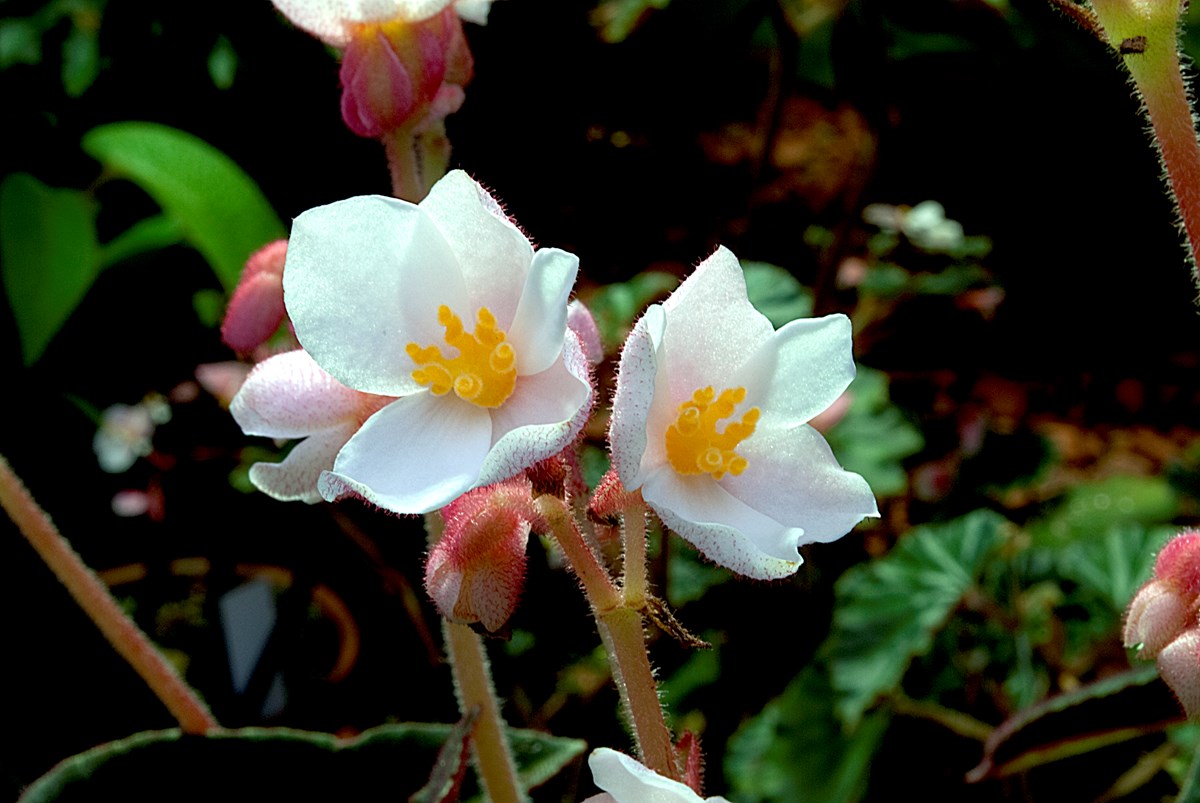Begonias

The Begonia collection in the Botanical Garden comprises about 100 species and cultivars, including the Begonia masoniana (iron cross begonia) from New Guinea, the Begonia foliosa från Ecuador and the Begonia manicata from Mexico. Some well-known hybrids can also be enjoyed, like the Begonia x erythrophylla, the Begonia x ricinfolia and the Begonia albopicta.
The begonia as ornamental plant
At the end of the nineteenth and beginning of the twentieth centuries, the popularity of begonias as ornamental plants was considerably greater and the assortment much more varied than today. After that, their popularity with commercial growers dwindled despite the enormous increase in new wild species being described.
Begonias are currently undergoing something of a renaissance. Several new and old species have been launched and become accessible for the ordinary amateur grower. This lovely and often very rewarding ornamental plant is well worth attention.
Distribution and appearance
The Begonia family comprises about 1,400 species that grow in all the tropical and subtropical parts of the world. Northern South America has the greatest abundance. The variations are great. Some begonias are very small, others grow to a height of 3-4 metres and yet others are delicate creepers.
Currently there are over 10,000 named cultivars. This is the result of long-standing, systematic hybridisation and selection.
Almost all Begonia species have asymmetrical leaves. The flowers are single-sexed and female and male flowers are found on the same plant. The seeds are very small and usually spread by the wind. In some species, the seeds have air-filled cells like balloons that facilitate their spreading.
The usefulness of begonias
Begonias have few uses apart from as garden plants, but there are examples nonetheless. The Begonia grandis cultivated in China has been used for hundreds of years for cleansing wounds and treating swellings, and is still today. Many begonias are eaten as vegetables or drunk as herbal tea locally in Africa, Asia and South America.
Several species are included in traditional folk medicine, for example as herbal teas to cure fevers and colds. A rather bitter, purple-coloured tea made from the Begonia fimbristipula, well-known in Southern China, can sometimes be found in Asian shops in the West.
Begonia muricata is grown in parts of Indonesia as a vegetable. In South America, the leaves of a couple of species are used as sources of vitamin C, to prevent scurvy.
The Begonia Greenhouse
The climate in this greenhouse is subtropical with a winter temperature of about 15°C. Apart from the approximately 150 species and cultivars in the Begonia collection, important crop plants like rice, cotton, ironwood (lignum vitae) and coffee grow here.






